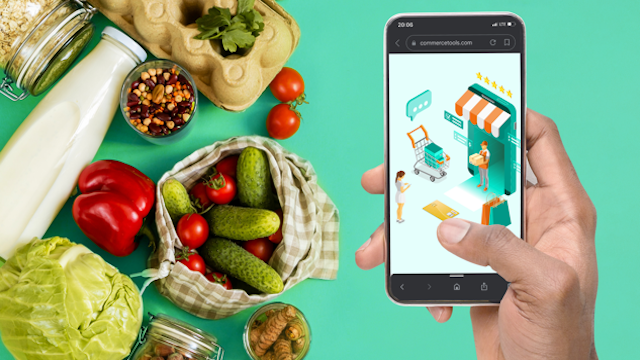The Covid-19 pandemic has accelerated growth in online grocery sales, as grocery retailers realise having a digital presence for online ordering and delivery services is now critical to stay afloat.
A recent report from McKinsey found that we’re starting to see significant innovations in the omnichannel grocery-customer experience, with several Asian markets, such as China and Japan, leading the way.
Addressing the need for Asia’s grocery retailers to implement scalable online commerce solutions, commercetools’ whitepaper aids their transition toward new omnichannel business models, while also adapting to massive fluctuations in shopper demand.
Covid-19 an opportunity for scalable solutions
Before Covid-19, seasonal celebrations like the festive seasons and other public holidays meant grocery retailers had to manage peaks in customer demand. However, panic buying and empty shelves during Covid-19 has exposed how quickly and easily our food supply can reach its limits or even collapse and has put the spotlight on e-commerce platforms that aren’t built to scale.
For example, leading supermarket chains in Australia – Woolworths and Coles – experienced online delivery shutdowns due to frenzied consumer purchasing, and both had to rapidly scale networks to prevent further outages.
According to McKinsey, we’re seeing an acceleration of trends that already existed before the crisis, and online delivery’s volume increasing by the same amount in eight weeks as it had over the entire previous decade, is just one example of that.
This highlights the critical need for grocery retailers to focus on expanding digital commerce capabilities, whether that be kickstarting the shift towards online or scaling an existing solution.
Headless architecture for unstoppable digital commerce
Enter headless commerce, a concept pioneered by commercetools that enables fast and flexible software for retailers to iterate and launch faster with catalogue management features that make quick pivots possible.
By separating the front and backend of the customer experience without causing disruption, headless opens up new possibilities for personalisation, allowing grocery retailers to serve up more compelling online experiences tailored to the tastes and preferences of their shoppers.
Last year, Nuts.com, an online business selling the highest quality nuts and pantry staples, adopted this type of headless approach for a more resilient platform that would link its B2B, B2C and wholesale divisions. The transition provided Nuts.com with the flexibility and adaptability to meet the modern customer’s consumption demands, while setting up the company for its future business needs.
There is no one-size-fits-all approach when it comes to e-commerce – the right fit requires analysis of existing environments, along with exploration of strategic long-term objectives. Through the pandemic, however, grocery retailers across the region operating monolithic commerce systems have been forced to re-examine how they engage customers and are quickly realising how headless architecture can help achieve a seamless online shopping experience.







